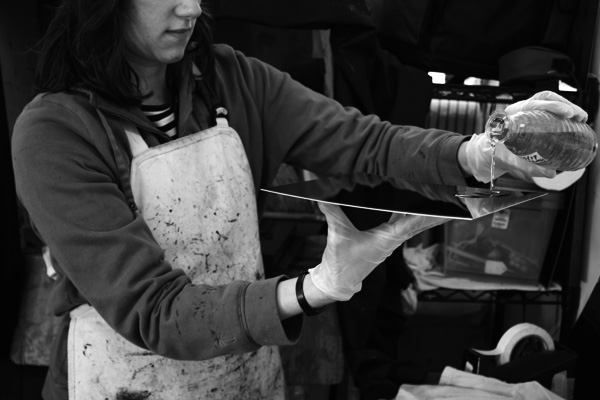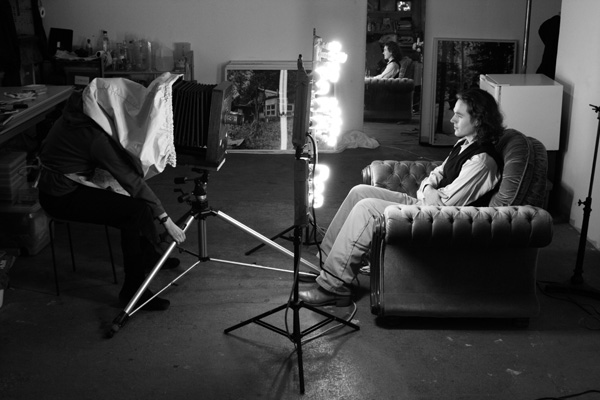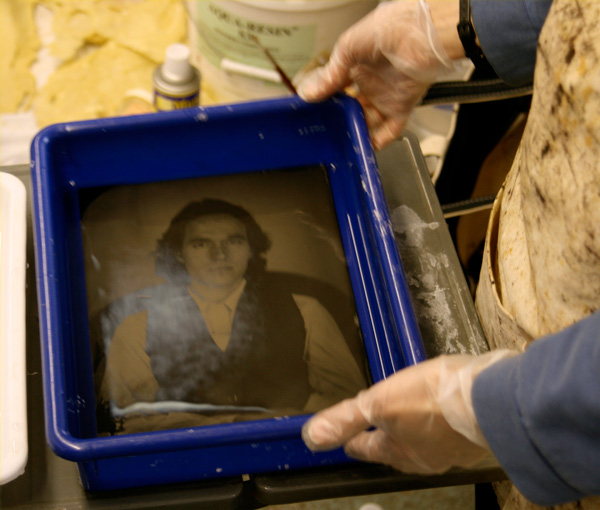About the Wet Plate Collodion Process

The wet plate collodion process was the leading mode of photography in the 1850's and 1860's. Ambrotypes are positive images exposed onto blackened glass; tintypes are made the same way but onto blackened metal. The finished plates are one-of-a-kind three-dimensional objects.

The wet plate process requires precisely mixed homemade chemistry: collodion, silver bath, fixer, and varnish. The chemistry that is poured onto each glass or metal plate is less sensitive to light than film, forcing exposures to be longer than one can hold an unwavering smile, hence the serious expressions. Often a head brace is necessary to hold a pose. The sitter must focus intently on the camera while the photographer sensitizes, exposes,and develops the image before the plate dries. The chemical properties of the process allow each image to be seen minutes after the exposure is made.

I use wooden view cameras and original 19th-Century brass lenses with large apertures to create a picture plane that allows only a small part of the subject to be in focus—a person's eye, face, or hands. Ambrotypes and tintypes are in many ways anti-snapshot: a face over many seconds or even minutes is exposed, as an extended moment is compressed onto a single plate.
To find out more about my process and scheduling a portrait session, please visit my portrait website: www.tintypeportraits.com
All images of process by Leigh Van Duzer.